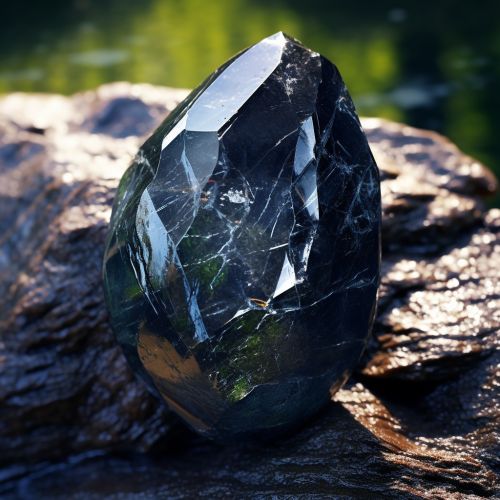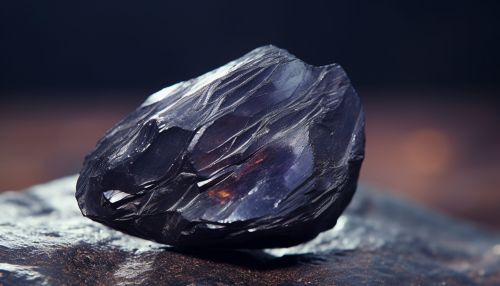Tektite
Introduction
Tektites are a type of natural glass, rich in silica, formed during meteorite impacts. They are among the "driest" rocks, with an average water content of less than 0.005%. This is very unusual, as most formation processes of rocks in the Earth's crust require water. Tektites are also characterized by their lack of crystalline structure, which is another unusual feature.


Formation
The exact process of tektite formation is still a subject of debate among scientists. The most widely accepted theory is that they are formed during the impact of a large meteorite on the Earth's surface. The intense heat and pressure of the impact melt the terrestrial rocks at the impact site, and some of this molten material is ejected into the atmosphere. As it cools and solidifies while falling back to Earth, it forms tektites.
Physical Properties
Tektites are typically black or dark brown in color, and their shape can vary widely. Some are spherical or teardrop-shaped, while others are irregular or scalloped. The surface of a tektite is often smooth or may exhibit grooves and pits, which are thought to have formed as the molten material cooled and solidified in the atmosphere.
Classification
Tektites are classified into several types based on their geographical distribution and physical characteristics. These include Australites, found in Australia and Antarctica; Moldavites, found in central Europe; Indochinites, found in Southeast Asia; and Ivory Coast tektites, found in the Ivory Coast in West Africa. Each of these types has unique characteristics that distinguish them from the others.
Distribution
Tektites have been found on all continents except Antarctica. The largest known strewn field, or area where tektites are found, is the Australasian strewnfield, which covers about 10% of the Earth's surface.
Uses
Tektites have been used by humans for various purposes throughout history. Some cultures have used them as talismans or amulets, while others have used them as tools or as a source of glass for making artifacts. In modern times, tektites are often used in jewelry and are prized by collectors for their unique properties and formation history.
